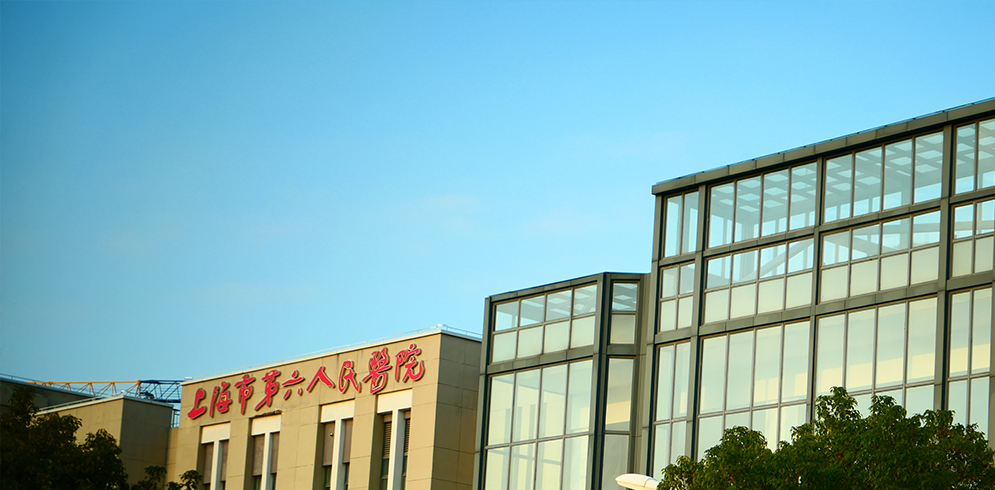
Introduction
The Department of Rehabilitation Medicine of Shanghai Sixth People's Hospital, formerly known as the Department of Physiotherapy, was established in 1953 and underwent a name change to Rehabilitation Medicine in 1991. Professor Huang Hua, the inaugural department director, served as the first and third chairman of Physical Therapy Specialty Committee (now the Board of Physical Medicine and Rehabilitation Specialty) of the Shanghai Medical Association. The department played a pivotal role in the world's first case of replantation rehabilitation of a severed finger in 1963, thereby spearheading rehabilitation technology nationally and globally. In 2019, Professor Huang Hua and Dr. Zhu Peiyi were honored with medals commemorating the 70th anniversary of the founding of the People's Republic of China.
Over successive generations, the Department of Rehabilitation Medicine has emerged as a national leader in orthopedic rehabilitation, garnering widespread acclaim. It serves as one of the first batch of standardized residency training bases for rehabilitation medicine recognized by National Health Commission and Shanghai Municipal Health Commission. Additionally, it holds prominent positions, including Chairman of the Board of Rehabilitation Therapy Specialty in Shanghai Rehabilitation Medicine Association, Vice President of the Rehabilitation Physicians Branch of the Shanghai Medical Doctors Association, Vice Chairman of the Board of Physical Medicine and Rehabilitation Specialty of the Shanghai Medical Association, Vice Chairman of the Board of Rehabilitation Therapy Specialty of the Chinese Association of Rehabilitation Medicine, and the Rehabilitation Physician Branch of the Chinese Medical Doctors Association.
With a rich history, the Department of Rehabilitation Medicine is committed to integrity, innovation, and high-quality development. Its overarching goal is to enhance patient recovery with higher quality and faster speed. The members remain steadfast in their commitment, making significant contributions to the advancement of rehabilitation medicine in China.
Specialties
Building upon the expertise of the renowned Department of Orthopedics, the Department of Rehabilitation Medicine specializes in orthopedic rehabilitation. It serves as the rehabilitation hub within the hospital, offering rehabilitation services across all disciplines. The department comprises six specialized groups: upper limb, lower limb, spine, perioperative rehabilitation, neurological rehabilitation, and intensive cardiopulmonary rehabilitation. It provides comprehensive orthopedic rehabilitation services encompassing evaluation, prevention, education, treatment, and return-to-sport protocols, with the ultimate aim of enabling patients to seamlessly resume their sports activities.
- Advanced trauma rehabilitation technology: The department boasts a robust orthopedic rehabilitation team dedicated to the evaluation and treatment of bone, joint, ligament, tendon, and peripheral nerve injuries. It excels in post-surgical rehabilitation for complex conditions such as severe trauma, limb reconstruction, bone tumors, joint replacement and ligament reconstruction.
- Orthopedic perioperative rehabilitation: Collaborating closely with the Department of Orthopedics, the department implements perioperative rehabilitation for orthopedic patients across nine sub-specialty wards. It has developed over 70 standardized orthopedic perioperative rehabilitation protocols, provide patients with ultra-early and standardized care to prevent functional disabilities such as joint stiffness, and ensure rapid orthopedic recovery.
- Rehabilitation of post-traumatic difficulties: The department addresses challenging clinical issues such as post-traumatic bone nonunion and peripheral nerve damage. Through innovative rehabilitation protocols, it integrates ultrasound-guided therapy to accurately locate the bone nonunion, develops advanced rehabilitation techniques including Extra corporeal Shockwave Therapy, and uses neuro-electrophysiological diagnostic techniques to early recognize the peripheral nerve lesions with accuracy. Besides, it applies physical agent, neuromodulation, therapeutic exercises, orthotics into practice to achieve positive outcomes.
- Sports rehabilitation evaluation and treatment: The department provides care based on six parts of muscle function and each element of body mobilities by utilizing isokinetic muscle strength test and exercise, gait analysis and exercise, and balance test and exercise. By utilizing such state-of-the-art equipment, the department offers accurate evaluation and formulate tailored rehabilitation strategies for patients with sports injuries to reach higher performance level and prevent re-injuries.
- Systematic treatment of spinal pain: Addressing recurrent spinal pain poses a significant clinical challenge. Over years of exploration, the department has developed a comprehensive rehabilitation system targeting various factors contributing to spinal pain, including inflammation, muscle dysfunction, disc herniation, facet joint disorders, abnormal posture, and scoliosis. This system integrates a range of techniques into practice, such as physical agent therapy, non-surgical spinal decompression, shockwave therapy, chiropractic care, postural assessment, rehabilitation robots, and therapeutic exercises. Additionally, specialized equipment focusing on neuromuscular activation and control exercises, such as imoove 300, BTE Multi-Cervical Unit (MCU), and Sling Exercise Therapy (SET), is employed to improve spine kinetics and aid in the prevention, treatment, and rehabilitation of spinal diseases.
- Breakthroughs in joint disorder rehabilitation Shoulder pain, elbow pain, knee pain, ankle pain with mobility deficits are common clinical symptoms. To improve neuromuscular function and joint kinetics for patients with joint pain, the department keeps improving treatment plans based on human body biomechanic and sports science. The department also integrates innovative techniques, such as muscle energy technique (MET), muscle activation technique (MAT) with the application of rehabilitation robots, making significant strides in treating patients with shoulder disorders, scapular dyskinesia and other dysfunctions.
- Early intervention in neurological rehabilitation: Through close collaboration with the Neurology and Neurosurgery departments, the department provides early inpatient rehabilitation and early intervention for intense neurological conditions. It offers prevention, evaluation, and treatment for patients with neurological dysfunction caused by neurological diseases.




